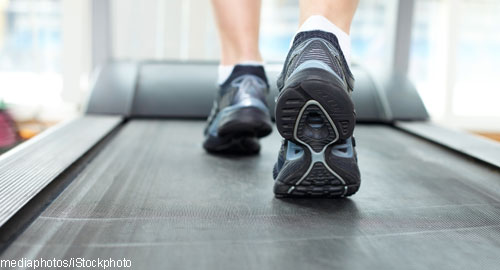 Arthritis affects 54 million adults in the U.S. and is a common comorbidity in patients with diabetes, heart disease and obesity. Healthcare providers, as well as adults with arthritis, agree that physical activity can be a helpful, low-risk tool to manage arthritis. Exercise also benefits patients with diabetes, heart disease and obesity. The ACR has gone so far as to include exercise as a first-line nonpharmacologic strategy in its osteoarthritis recommendations. Likewise, one of the Healthy People 2020 objectives is to increase counseling about the benefits of exercise, to ensure that nearly 58% of individuals with arthritis receive the recommendation.1,2
Arthritis affects 54 million adults in the U.S. and is a common comorbidity in patients with diabetes, heart disease and obesity. Healthcare providers, as well as adults with arthritis, agree that physical activity can be a helpful, low-risk tool to manage arthritis. Exercise also benefits patients with diabetes, heart disease and obesity. The ACR has gone so far as to include exercise as a first-line nonpharmacologic strategy in its osteoarthritis recommendations. Likewise, one of the Healthy People 2020 objectives is to increase counseling about the benefits of exercise, to ensure that nearly 58% of individuals with arthritis receive the recommendation.1,2
Jennifer M. Hootman, PhD, an epidemiologist with the Arthritis Program at the Centers for Disease Control & Prevention in Atlanta, and colleagues evaluated the prevalence of healthcare provider counseling for physical activity as a management strategy for arthritis. They published the results of their analysis in the Jan. 5 issue of Morbidity and Mortality Weekly Report.3 The investigators found that although the prevalence of healthcare provider counseling among adults with arthritis has increased significantly over the past decade, it still remains low, leaving many subpopulations of patients with arthritis falling short of the Healthy People 2020 objective.
The researchers analyzed data collected from 2002–2014 from the ongoing National Health Interview Survey (NHIS) of the civilian, noninstutionalized U.S. population. The NHIS data are self-reported, and the response rate from the survey was low (74.3% in 2002 and 58.9% in 2014). The investigators used this survey to examine changes in age-adjusted counseling for exercise in 31,044 adults in 2002 and 36,697 adults in 2014.
The survey revealed that, in 2002, 51.9% of adults received healthcare provider counseling for exercise. However, in 2014, the number had increased 17.6% to a total prevalence of 61% (P<0.001). Unfortunately, the researchers note that approximately 40% of adults with arthritis did not receive healthcare provider counseling for exercise. The patients who did not receive counseling for exercise experienced a higher age-adjusted prevalence of physical inactivity.
Non-Hispanic persons of other races, underweight/normal weight persons, current smokers, inactive persons and persons without a primary healthcare provider all received less exercise counseling than the pooled arthritis population. Specifically, in 2014, 53.8% of non-Hispanic other races, 50% of underweight/normal weight people, 56.9% of current smokers, 56.7% of inactive individuals and 50.7% of people without a primary care provider received the healthcare provider counseling for physical activity. Thus, all of these subgroups fell below the Healthy People 2020 goal of 57.4%.


